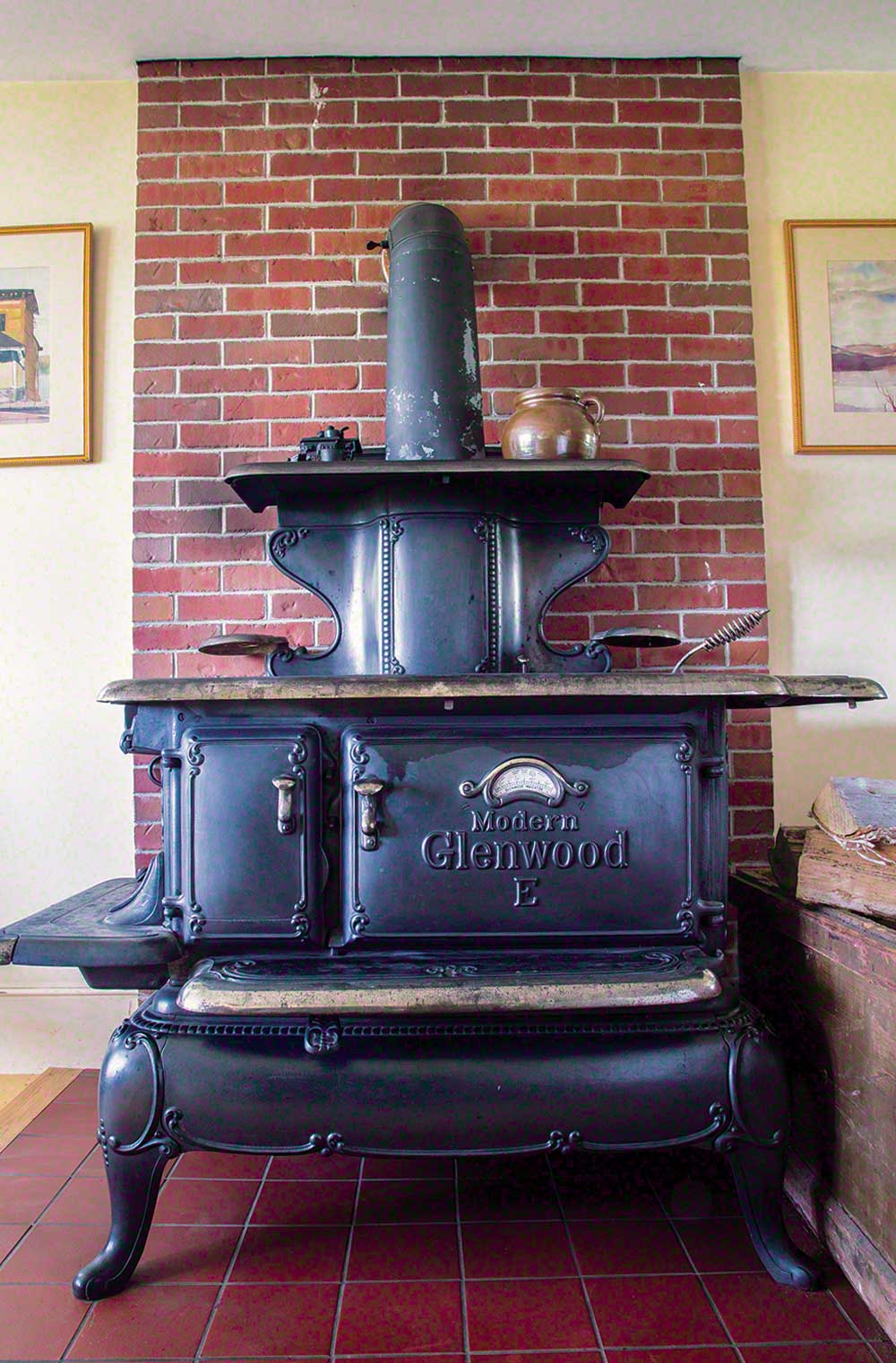The Mighty Glenwood Cookstove | New England’s Gifts
The Glenwood cookstove was America’s first true home appliance. Learn how gradually (very gradually) Yankee contributor Edie Clark learned that she could do many things on this stove that she couldn’t do on a modern stove.

The author’s current 19th-century cookstove is a cast-iron Glenwood E. The handsome six-burner E series was manufactured in Taunton, Massachusetts, between 1880 and 1930.
Photo Credit : Lori PedrickWhat was to become my stove was jammed into a freight car on the sidelines of the old train station in Littleton, Massachusetts. The stoves were pushed together willy-nilly, wherever space could be found. From this amazing jumble, Dave Erickson urged me to select one that most appealed; he would extract it and restore it to its former splendor. Outside, among the grasses, dozens more, mostly in pieces, awaited rescue. In the darkness of that freight car, I found what I was looking for: a diamond in the rough, no rust, the stylish legs and warming shelf still smooth and even a little shiny. And, like almost all the stoves in this vast yard, it had a story: It had belonged to an old lady in Fitchburg who hadn’t used it to burn wood, but instead had run gas pipes through it. As a result, the stove was in remarkably good condition. Dave reminisced a bit about the day he took it out of her kitchen. Then as now, no one can rhapsodize about a cookstove like Dave, who has kept his love affair with these beauties for some 35 years. He’s been an evangelist for old cookstoves almost as long as I.
The stove I chose was to replace one that my first husband and I had bought 10 years earlier from a hardware store in Brattleboro, Vermont—an antique sold “as is.” A Glenwood C manufactured in 1890, it was like new. That stove became the heart of our house and, most painfully, had to be sold with the house when we divorced some years later. A multitasker, the Glenwood burned wood, so it heated the house and its oven baked our bread and the stovetop cooked or heated just about anything. The oven door proclaimed Glenwood C in ornate, embossed lettering, and in the center of the name was the thermometer gauge for the oven. Beneath the oven door was a little pedal (beautifully decorated as well); if I pressed it with my foot, the door swung open so that I could easily put the turkey or whatever into the oven, not needing three hands. The various warming shelves not only kept dishes hot but at different temperatures: some warmed just a little, others almost cooked. Gradually, very gradually, I learned that I could do many things on this stove that I couldn’t do on a modern stove. I could even grill steaks. That stove turned me into a believer, a believer in the Glenwood, a believer in wood heat and wood cooking, and a believer in form and function, which these stoves displayed in spades. Now I needed a replacement, and I turned to stove restorer Dave Erickson in my search.
Almost everything I know about Glenwood stoves came to me first through trial-and-error but then through Dave. From him, I learned about dampers and draft slides, finials and footrests, towel racks and trivets, nickel plating, scrollwork, and sidecars. I’ve listened to him sermonize about the brilliance of butter warmers, clock shrines, and simmer burners and explain the physics of draft and the intricate and ingenious path the heat takes around the oven on its way up the chimney.
The one thing he’s never told me is that the Glenwood was America’s first home appliance. Stoves like mine came out of the massive fiery furnaces of the foundries of Taunton, Massachusetts, then known as “Stove City.” The Glenwood quickly replaced the hearth as a way to cook, distinguished by its ability to heat and bake with far more precision than an open fire.
Literally thousands of other foundries turned out cookstoves of all varieties in that booming era between the 1850s and World War I (when iron became more valuable for waging war than for cooking dinner). The Glenwood was simply the first and, in the opinion of many, including Dave, the best. “They’re the most durable, most reliable, and most beautiful, and they have an indestructible design,” he says. “They’re the Cadillac, the El-dorado, of stoves.”
The stove that Dave pulled out of that freight car back in the 1980s has followed me through the many phases of my life and now sits in my kitchen here at Mary’s Farm, facing another stove, also a Glenwood. That one cooks with gas and is clad in green-and-cream enamel, the name Glenwood also proudly shown on the oven door. The two stoves, one from the 19th century and the other from the 20th, rest on their graceful legs and catlike feet. Facing each other as they do, it sometimes seems as though they’re speaking to each other, and if they are, it’s a conversation I would love to hear.


